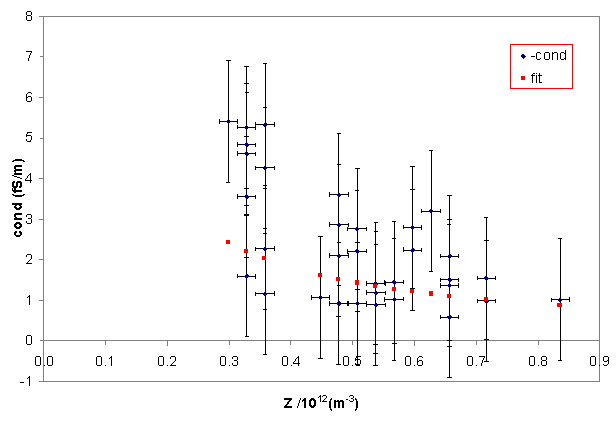
Much urban pollution is in the form of particulate matter, emitted from motor vehicles and from industry. Particles smaller than 10 microns (thousandths of a millimetre) are known as PM10 and are able to penetrate into the lungs. More recently smaller particles, PM2.5, have been found to penetrate the alveoli and are of even greater concern. It is important to measure the concentration of urban aerosol pollution to assess its potential impact on health and find out more about its behaviour, for example how the concentration might vary with distance from a source and with meteorological factors. There are a number of commercial instruments currently available to measure urban pollution. These utilise various properties of the urban aerosol, but can only operate within certain (often poorly defined) size ranges. They are often expensive and difficult to use. Monitoring pollution levels is now a mandatory requirement for local authorities, thus it is clear that a reliable and accurate method to measure urban particulate pollution is required.
The Gerdien condenser method of urban pollution measurement uses the electrical properties of particles in the air to measure aerosol concentration. The air contains approximately 100 small ions per cubic centimetre, which are formed by natural radioactive particles and cosmic rays. As a result, the air is slightly electrically conductive. Pollutant aerosol particles are much larger than these small ions, so it is possible for the small ions to collide with the pollutant particles and attach to them. When this happens, the small ion becomes part of a much larger particle, and can no longer contribute to the conductivity of the air. When particulate pollution levels are high there are more particles for the small ions to attach to, and the result is that the conductivity decreases as urban pollution increases. So if we can measure the conductivity of the air then we should be able to infer urban aerosol pollution concentrations.
 |
Using the conductivity of the air as an urban pollution indicator is advantageous, as it is influenced by many different sorts of pollutant, and there is no upper size limit. Conductivity measurement provides an indirect reading of the particulate pollution levels and as such has no effect on the pollutant concentration. This is preferable to certain instruments already on the market, which can only select a certain size range to measure. Their presence also perturbs the behaviour of the particles that they are trying to measure. The design of the conductivity measuring equipment is low maintenance in contrast to other instruments which cannot be operated remotely and continuously. The Gerdien condenser is relatively small, simple and cheap, and could be used to measure small scale pollution variations. This would be impossible with a large and expensive aerosol monitor.
The Gerdien condenser is a conductive tube containing a thin central electrode. Application of a voltage between the outside of the tube (outer electrode) and central electrode causes ions of the same sign as the voltage to be repelled from the outer electrode. Some will hit the central electrode on their path through the tube and cause a current, which can be measured if the central electrode is earthed via a very sensitive ammeter. If air is continually passed through the tube then a continual current can be recorded, which is directly proportional to the numbers of small ions in the air and hence the conductivity. Measuring the currents from the central electrode is a difficult matter because they are extremely small, about 1×10-14 A. Once the conductivity has been measured reliably, straightforward calculations allow the aerosol concentration to be found.